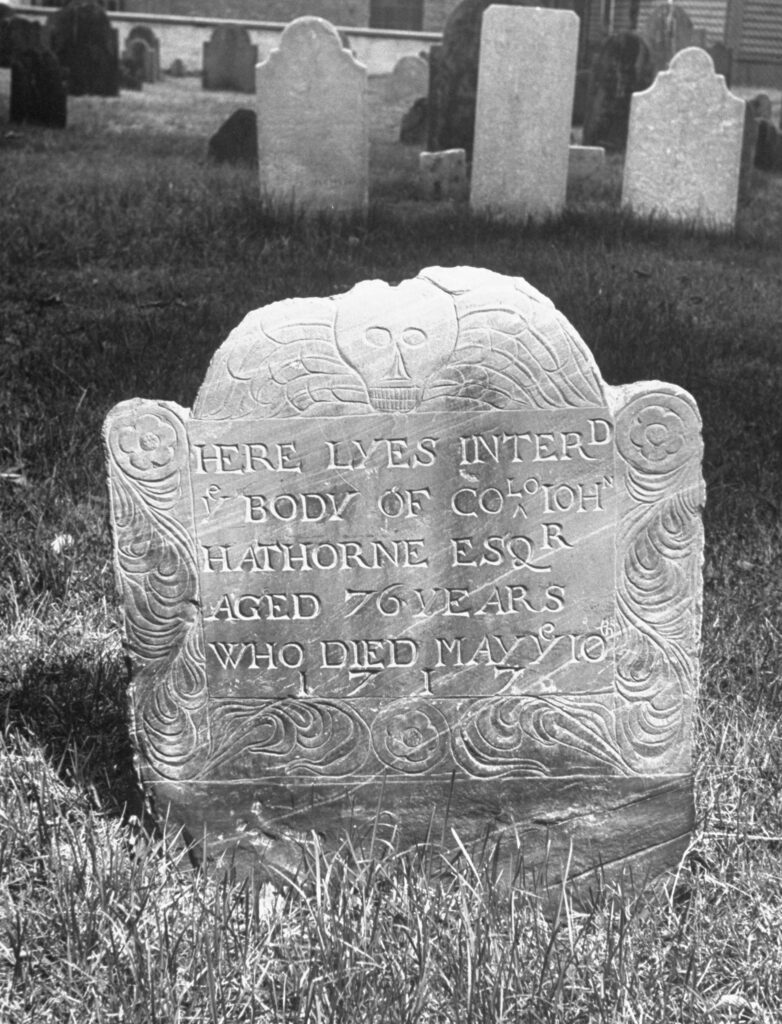Written By: Alexa Jade Frankelis
LIFE Photographer Nina Leen’s wide breadth of work ranged from fashion to documentary to animal portraiture. With an expansive portfolio, it comes as no surprise that she did not shy away from the macabre. For example, Leen had some of this work featured in a spread for an October 1957 issue of LIFE that covered America’s most famous ghost stories.
Years before her ghostly 1957 series—and over 250 years after the Salem Witch-trials of 1692—Leen visited Salem, Massachusetts to reexamine the horrific events in Salem. For the September 26, 1949 LIFE issue, Leen and the author Marion L. Starkey visited historic sites where the witch trials took place. They followed the narrative of Starkey’s new book at the time, The Devil in Massachusetts: A Modern Enquiry into the Salem Witch Trials.

Author, Marion L. Starkey, holding a cat, 1949.
(Photo by Nina Leen/The LIFE Picture Collection © Meredith Corporation)

Tree at the top of Gallows Hill in Salem, Massachusetts, 1949.
(Photo by Nina Leen/The LIFE Picture Collection © Meredith Corporation)
In her book, Starkey recounts the trials from a modern psychological perspective, coming to the conclusion that “boredom, drudgery, and fear of Hell” among the teenage accusers were to blame for the nineteen executions that resulted from the trials.
Leen and Starkey particularly followed the story of the seventy-one year old victim, Rebecca Nurse, who was hanged at Gallows Hill with four others on July 19, 1692. In the above image, Leen captures the ominous tree, protruding from the landscape on a gray New England day. In the 1940s, this is where historians believed the executions took place. More recent research has determined that the hangings actually took place at Proctor’s Ledge, which is located between modern-day Proctor Street and Pope Street in Salem, Massachusetts.

Salem’s “Witch House” with actors dressed in Puritan clothing for colonial reenactments, 1949.
(Nina Leen/The LIFE Picture Collection/Shutterstock)

Descendant of witchcraft accuser Ann Putnam, holding a flower, 1949. Putnam was Nurse’s original accuser. She later recounted her accusations against Nurse in 1706.
(Nina Leen/The LIFE Picture Collection/Shutterstock)

Sewing pins that were used as “evidence” in Nurse’s trial. During the witch-trials, it was reported that they were used by “witches” to torture their victims.
(Nina Leen/The LIFE Picture Collection/Shutterstock)
Another victim of the witch trials was Tituba, an enslaved woman that worked for the Reverend Samuel Parris’ household. The image below is a sign that marks the site of “…where the young girls congregated to hear weird stories told by Tituba The West Indian Servant”.

Plaque establishing the site of the Reverend Samuel Parris’ home.
(Photo by Nina Leen/The LIFE Picture Collection © Meredith Corporation)

Blurred exposure of a woman sitting by the window, 1949.
(Photo by Nina Leen/The LIFE Picture Collection © Meredith Corporation)

The grave site of John Hathorne, 1949. Hathorne was the magistrate of Salem in the 1600s and a leading judge in the witch-trails.
(Nina Leen/The LIFE Picture Collection/Shutterstock)
















